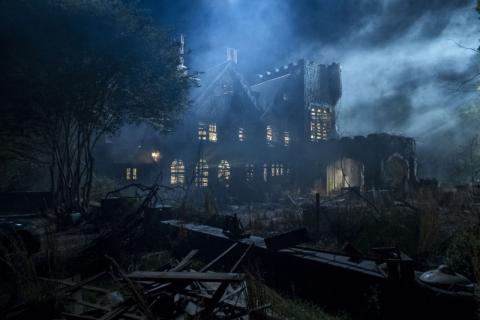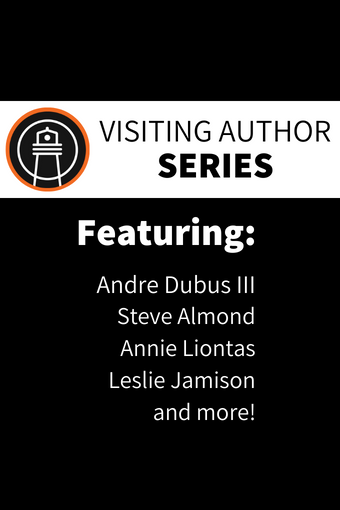
by Lindsey Drager
We all know what makes a tale ‘gothic’—corpses, ghosts, abandoned houses, transgressive desire, oppression, psychological instability, secrets, and suspense. But what is the gothic about?
While we may think of American Gothic fiction as concerned with history, a close and contemporary reading of the writers we traditionally think of as gothic—Melville, Hawthorne, Irving, Poe—suggests that American Gothic fiction might be best characterized as concerned with the spectral space of the future. In other words, the characters of these early American Gothic works are not haunted by history, but by the threat of history’s resurfacing. As Allan Lloyd-Smith puts it in his American Gothic Fiction:  An Introduction, “This is the distinctive theme and deepest insight of American Gothic, the sense that there is something behind, which may not be, as in European Gothic, the Past, but some perpetual and present Otherness, hidden within, behind, somehow below the apparently benign ‘natural’ surface.” In short, the gothic impulse is present whenever the appearance of normality misleads. In this way, the gothic might be what lies behind a character’s literal or metaphorical mask—whether that takes shape as infidelity or plastic surgery—or what is carried out behind a seemingly quaint suburban front door. As Charles L. Crow claims in his introduction to History of American Gothic, “Ultimately, all Gothic stories are family stories.”
An Introduction, “This is the distinctive theme and deepest insight of American Gothic, the sense that there is something behind, which may not be, as in European Gothic, the Past, but some perpetual and present Otherness, hidden within, behind, somehow below the apparently benign ‘natural’ surface.” In short, the gothic impulse is present whenever the appearance of normality misleads. In this way, the gothic might be what lies behind a character’s literal or metaphorical mask—whether that takes shape as infidelity or plastic surgery—or what is carried out behind a seemingly quaint suburban front door. As Charles L. Crow claims in his introduction to History of American Gothic, “Ultimately, all Gothic stories are family stories.”
Indeed, the ghosting that happens in American Gothic tales finds itself performing this anxiety about the future through the next generation in its consistent concern with child abuse, child neglect, dead babies, child-psyches who occupy adult  bodies, unknown paternity, incest, concealed adoptions, and the constant threat of hereditary tragedy. But this anxiety is also performed through narrative mode, as gothic tales often employ prolepsis and future tense to harness the eerie nature of storytelling. As Lloyd-Smith argues in Uncanny American Fiction, the uncanny (that strange familiar-foreign experience often associated with the phenomenon of déjà vu) is very much the effect we experience when we read. Crow takes this claim one step further, arguing that the monster or creature in gothic fiction can be read “as a trope for the reader: a transparent creature who can enter the minds and body of any living thing and experience and enjoy its sensations.” And isn’t this true? That readers, through the eerie phenomenon of narration, come to occupy the players on the stage of the writer, a writer who herself ventriloquizes through the voice of the narrator? In other words, if the reader is a monster then the writer is a ghost.
bodies, unknown paternity, incest, concealed adoptions, and the constant threat of hereditary tragedy. But this anxiety is also performed through narrative mode, as gothic tales often employ prolepsis and future tense to harness the eerie nature of storytelling. As Lloyd-Smith argues in Uncanny American Fiction, the uncanny (that strange familiar-foreign experience often associated with the phenomenon of déjà vu) is very much the effect we experience when we read. Crow takes this claim one step further, arguing that the monster or creature in gothic fiction can be read “as a trope for the reader: a transparent creature who can enter the minds and body of any living thing and experience and enjoy its sensations.” And isn’t this true? That readers, through the eerie phenomenon of narration, come to occupy the players on the stage of the writer, a writer who herself ventriloquizes through the voice of the narrator? In other words, if the reader is a monster then the writer is a ghost.
And so, as the year turns and things grow colder—as we enter the season of decay—I’d like to offer some short works in the pseudo-contemporary American Gothic vein that don’t typically make it on the lists. I’m hoping we might reconsider the potential of the gothic tale in the 21st century, a time still coping with the vestiges of Manifest Destiny, the Civil War, and the myth of the American Dream, but also newly concerned with issues of identity, community, and selfhood in an age of rapid technological advance. As Joyce Carol Oates notes: “The surreal, raised to the level of poetry, is the very essence of ‘gothic’: that which displays the range, depth, audacity and fantastical extravagance of the human imagination.” These stories do just that—remind us that in the dark and cobwebbed arenas of our minds lay all kinds of ghastly and grim fictions “hidden within, behind, somehow below.”
So make yourself a monster this fall—read these short works. But please proceed with caution: they will haunt.
Aimee Bender’s “The Devourings,” from The Color Master
Diane Cook’s “Somebody’s Baby,” published in Salt Hill Journal
Don DeLillo’s “Human Moments in World War III”
William Gay’s “The Paperhanger”
A.M. Homes’ “Do Not Disturb,” from Things You Should Know
John Keene’s “Gloss on A History of Roman Catholics in the Early American Republic, 1790–1825; Or the Strange History of Our Lady of the Sorrows,” from Counternarratives
Ben Marcus’ “On Not Growing Up”
Joyce Carol Oates’s “Why Don’t You Come Live With Me It’s Time,” in Oates's short story collection Heat
Christine Schutt’s “You Drive,” from Nightwork
David Foster Wallace’s “Incarnations of Burned Children”
Kellie Wells’ “Secession XX,” published in Compression Scars, excerpted here
Kevin Wilson’s “The Dead Sister Handbook: A Guide for Sensitive Boys”
Charles Yu’s “Standard Loneliness Package”
 Lindsey Drager is the author of the novel The Sorrow Proper (Dzanc, 2015), a finalist for the 2012 Starcherone Prize for Innovative Fiction, the 2013 &NOW/Lake Forest College Madeleine P. Plonsker Emerging Writer Residency Prize, the 2014 Miami University Press Novella Prize, and the Sarabande Books Mary McCarthy Prize for both 2013 and 2014. Her essays and short fiction have been published or are forthcoming in Mid-American Review, Hayden’s Ferry Review, The Journal, Passages North, Black Warrior Review, Cream City Review, Quarterly West, Gulf Coast, Modern Language Studies, Kenyon Review Online, and elsewhere. She has served on the masthead of Ninth Letter, Green Mountains Review, Los Angeles Review, and the Review of Contemporary Fiction, and is currently an editor for Denver Quarterly and Starcherone Books. She has received residency fellowships to the Kimmel Harding Nelson Center for the Arts and the Vermont Studio Center and is a PhD candidate in creative writing at the University of Denver.
Lindsey Drager is the author of the novel The Sorrow Proper (Dzanc, 2015), a finalist for the 2012 Starcherone Prize for Innovative Fiction, the 2013 &NOW/Lake Forest College Madeleine P. Plonsker Emerging Writer Residency Prize, the 2014 Miami University Press Novella Prize, and the Sarabande Books Mary McCarthy Prize for both 2013 and 2014. Her essays and short fiction have been published or are forthcoming in Mid-American Review, Hayden’s Ferry Review, The Journal, Passages North, Black Warrior Review, Cream City Review, Quarterly West, Gulf Coast, Modern Language Studies, Kenyon Review Online, and elsewhere. She has served on the masthead of Ninth Letter, Green Mountains Review, Los Angeles Review, and the Review of Contemporary Fiction, and is currently an editor for Denver Quarterly and Starcherone Books. She has received residency fellowships to the Kimmel Harding Nelson Center for the Arts and the Vermont Studio Center and is a PhD candidate in creative writing at the University of Denver.
Lindsey's Writing Gothic Fiction starts on 10/20/2015

